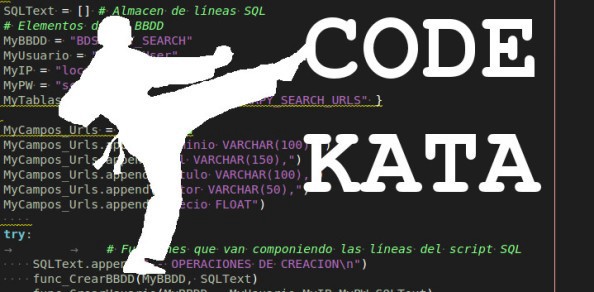
Day 1
두 개의 input에 복소수(complex number)가 string 으로 주어집니다.
복소수란 a+bi 의 형태로, 실수와 허수로 이루어진 수입니다.
input으로 받은 두 수를 곱해서 반환해주세요.
반환하는 표현도 복소수 형태의 string 이어야 합니다.
복소수 정의에 의하면 (i^2)는 -1 이므로 (i^2) 일때는 -1로 계산해주세요.
- 제곱 표현이 안 되어 i의 2제곱을 (i^2)라고 표현했습니다.
예제 1:
Input: "1+1i", "1+1i"
Output: "0+2i"
설명:
(1 + i) * (1 + i) = 1 + i + i + i^2 = 2i
2i를 복소수 형태로 바꾸면 0+2i.예제 2:
Input: "1+-1i", "1+-1i"
Output: "0+-2i"
설명:
(1 - i) * (1 - i) = 1 - i - i + i^2 = -2i,
-2i를 복소수 형태로 바꾸면 0+-2i.예제 3:
Input: "1+3i", "1+-2i"
Output: "7+1i"
설명:
(1 + 3i) * (1 - 2i) = 1 - 2i + 3i -6(i^2) = 1 + i + 6,
7+i를 복소수 형태로 바꾸면 7+1i.가정
input은 항상 a+bi 형태입니다.
output도 a+bi 형태로 나와야 합니다.
My Solution
const complexNumberMultiply = (a, b) => {
console.log(a,b)
const numA = a.includes("+") ? a.slice(0,a.indexOf("+")) : a.slice(0,a.indexOf("-"))
const imB = a.slice(a.indexOf("+")+1, -1)
const numC = b.includes("+") ? b.slice(0,b.indexOf("+")) : b.slice(0,b.indexOf("-"))
const imD = b.includes("+")? b.slice(b.indexOf("+")+1, -1) : b.slice(b.indexOf("-")+1, -1)
const answerA = numA*numC-imB*imD
const answerB = (numA*imD+imB*numC)+'i'
console.log(`${answerA}+${answerB}`)
return(`${answerA}+${answerB}`)
}Model Solution
const complexNumberMultiply = (a, b) => {
let firstArr = a.substring(0, a.length-1).split('+');
const a1 = Number(firstArr[0])
const a2 = Number(firstArr[1])
let secondArr = b.substring(0, b.length-1).split('+');
const b1 = Number(secondArr[0])
const b2 = Number(secondArr[1])
return `${a1 * b1 - a2 * b2}+${a1 * b2 + a2 * b1}i`
}Day 2
문자로 구성된 배열을 input으로 전달하면, 문자를 뒤집어서 return 해주세요.
- 새로운 배열을 선언하면 안 됩니다.
- 인자로 받은 배열을 수정해서 만들어주세요.
Input: ["h","e","l","l","o"]
Output: ["o","l","l","e","h"]Input: ["H","a","n","n","a","h"]
Output: ["h","a","n","n","a","H"]My Solution
const reverseString = s => {
return Array.from(s).reduce((result, c) => `${c}${result}`, '').split('');
};
reverseString("hello");Model Solution
const reverseString = s => {
for (let i = 0; i < s.length/2; i++) {
let reverseS = s[i];
s[i] = s[s.length-1-i];
s[s.length-1-i] = reverseS;
}
return s;
};Day 3
양수로 이루어진 m x n 그리드를 인자로 드립니다.
상단 왼쪽에서 시작하여, 하단 오른쪽까지 가는 길의 요소를 다 더했을 때,
가장 작은 합을 찾아서 return 해주세요.
한 지점에서 우측이나 아래로만 이동할 수 있습니다.
Input:
[
[1,3,1],
[1,5,1],
[4,2,1]
]
Output: 7
설명: 1→3→1→1→1 의 합이 제일 작음My Solution
const minPathSum = grid => {
const check = [];
for (let i in grid){
check.push([]);
for (let j in grid) {
check[i].push(0);
}
}
for (let i in grid) {
for (let j in grid[i]) {
if ( i === '0' && j === '0') {
check[i][j] = grid[i][j];
} else if ( i === '0') {
check[i][j] = check[i][j-1] + grid[i][j];
} else if ( j === '0') {
check[i][j] = check[i-1][j] + grid[i][j];
} else {
if (grid[i][j] + check[i][j-1] <= grid[i][j] + check[i-1][j]) {
check[i][j] = grid[i][j] + check[i][j-1];
} else {
check[i][j] = grid[i][j] + check[i-1][j];
}
}
}
}
return check[check.length-1][check[check.length-1].length-1];
};Model Solution
const minPathSum = grid => {
// 일단 첫 row와 첫 column은 각각, 그 path로 갔다고 생각하고 더해놓는다.
for (let i = 1; i < grid.length; i++) {
grid[i][0] += grid[i-1][0];
}
for (let i = 1; i < grid[0].length; i++) {
grid[0][i] += grid[0][i-1];
}
for (let i = 1; i < grid.length; i++) {
for (let j = 1; j < grid[0].length; j++) {
//위쪽이나 왼쪽에서, 더 작은걸로 더해준다.
grid[i][j] += Math.min(grid[i-1][j], grid[i][j-1]);
}
}
return grid[grid.length-1][grid[0].length-1];
};
console.log(minPathSum([[1,2,3],[4,1,2]]))Day 4
주어진 숫자 배열에서, 0을 배열의 마지막쪽으로 이동시켜주세요.
원래 있던 숫자의 순서는 바꾸지 말아주세요.
- 새로운 배열을 생성해서는 안 됩니다.
Input: [0,1,0,3,12]
Output: [1,3,12,0,0]My Solution
const moveZeroes = nums => {
for (i=nums.length-1; i>=0; i--){
if (!nums[i]) {
nums.push(nums[i])
nums.splice(i,1)
}
}
return nums
}Model Solution
const moveZeroes = nums => {
let last0 = 0;
for (let i = 0; i < nums.length; i++) {
if (nums[i] != 0) {
let temp = nums[i];
nums[i] = nums[last0];
nums[last0] = temp;
last0++;
}
}
return nums;
}
console.log(moveZeroes([1,0,2,0,3]))Day 5
- 재귀 알고리즘
오늘은 재귀알고리즘에 대한 문제입니다.
재귀(recursion)란, 자신을 정의할 때 자기 자신을 호출하는 방법을 뜻합니다. 프로그래밍의 함수정의에서 많이 사용됩니다.
예)
const countdown = n => {
console.log(n);
countdown(n-1);
}
countdown(10);countdown 함수는 받은 인자를 console로 출력합니다.
그런데 위의 함수를 실행하면 10에서 시작해서 무한으로 마이너스 값까지 내려갑니다.
그래서 재귀함수는 아래의 절차가 꼭 필요합니다.
- 언제 멈출것인가?
위를 고려해 0이 되면 더이상 재귀를 이어나가지 않도록 종료 조건을 추가하겠습니다.
const countdown = n => {
console.log(n);
if (n === 0) return;
countdown(n-1);
}
countdown(10);재귀의 이론은 위와 같이 아주 간단합니다. 재귀를 더 공부하고 싶은 분은 인터넷에 재귀 문제를 찾아 더 풀어보셔도 좋고, 알고리즘 책에서 재귀 부분만 더 읽으셔도 좋습니다.
- 문제
재귀를 사용하여 팩토리얼(factorial)을 구하는 함수를 구현해주세요.
팩토리얼이란 1에서부터 n까지의 정수를 모두 곱한것을 말합니다.
1! = 1
2! = 1 2
5! = 1 2 3 4 * 5
My Solution
const factorial = n => {
if (n === 0) return 1;
return n*factorial(n-1)
}(모델 솔루션과 같았다🤓)
